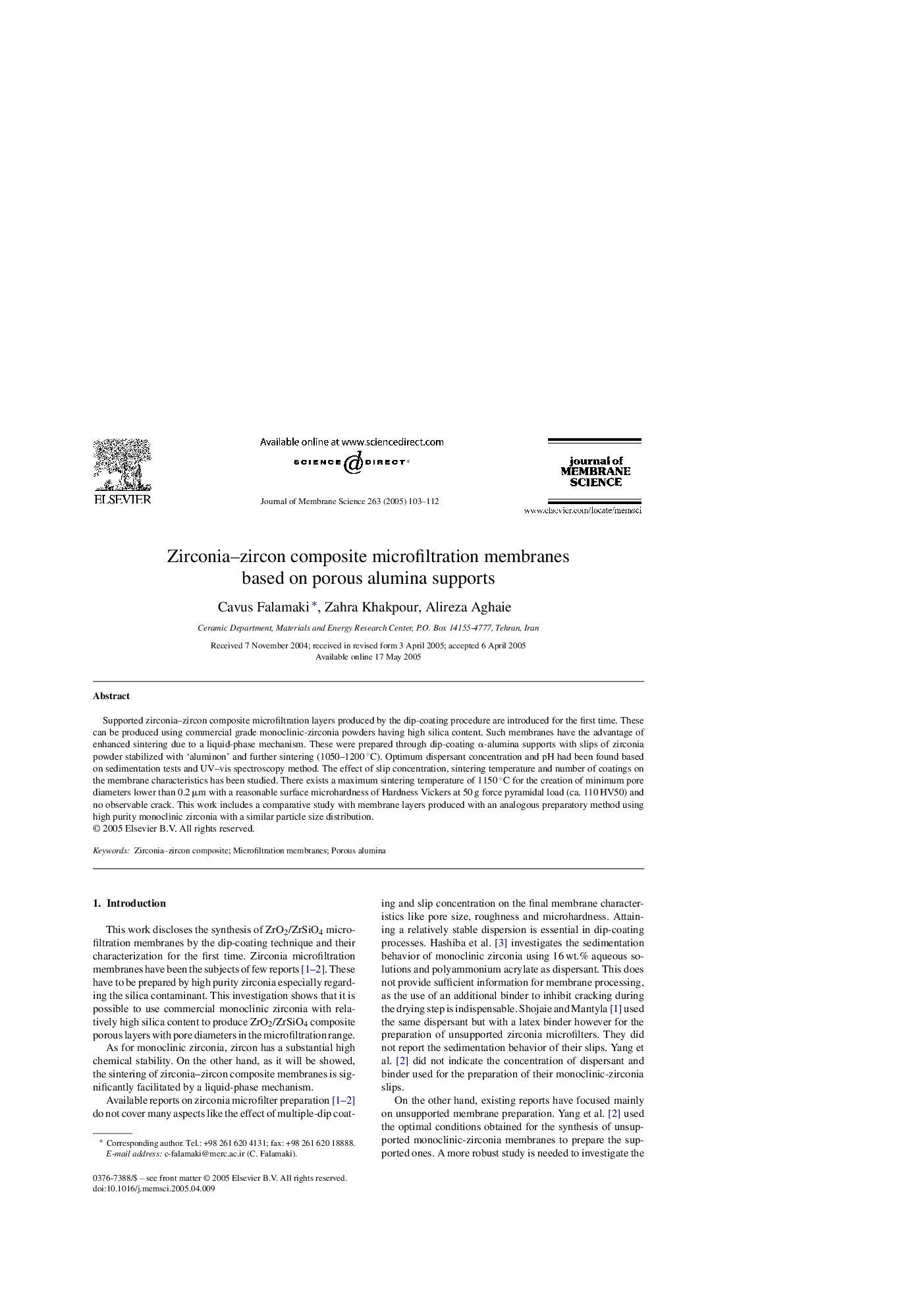| Article ID | Journal | Published Year | Pages | File Type |
|---|---|---|---|---|
| 9684657 | Journal of Membrane Science | 2005 | 10 Pages |
Abstract
Supported zirconia-zircon composite microfiltration layers produced by the dip-coating procedure are introduced for the first time. These can be produced using commercial grade monoclinic-zirconia powders having high silica content. Such membranes have the advantage of enhanced sintering due to a liquid-phase mechanism. These were prepared through dip-coating α-alumina supports with slips of zirconia powder stabilized with 'aluminon' and further sintering (1050-1200 °C). Optimum dispersant concentration and pH had been found based on sedimentation tests and UV-vis spectroscopy method. The effect of slip concentration, sintering temperature and number of coatings on the membrane characteristics has been studied. There exists a maximum sintering temperature of 1150 °C for the creation of minimum pore diameters lower than 0.2 μm with a reasonable surface microhardness of Hardness Vickers at 50 g force pyramidal load (ca. 110 HV50) and no observable crack. This work includes a comparative study with membrane layers produced with an analogous preparatory method using high purity monoclinic zirconia with a similar particle size distribution.
Related Topics
Physical Sciences and Engineering
Chemical Engineering
Filtration and Separation
Authors
Cavus Falamaki, Zahra Khakpour, Alireza Aghaie,
